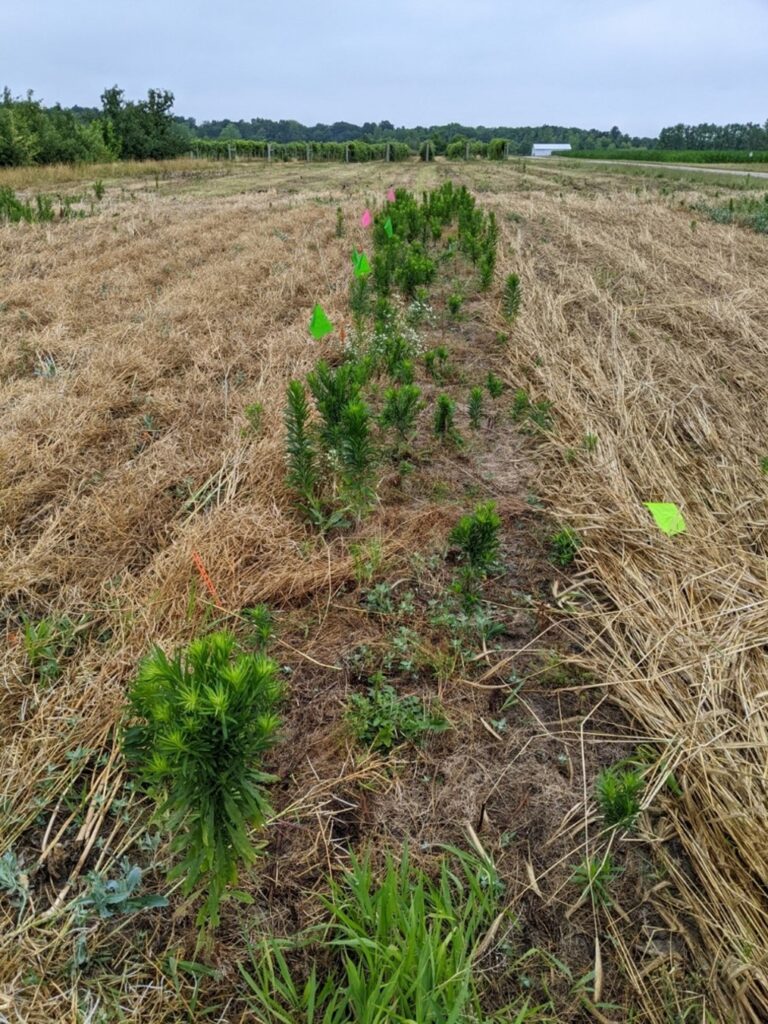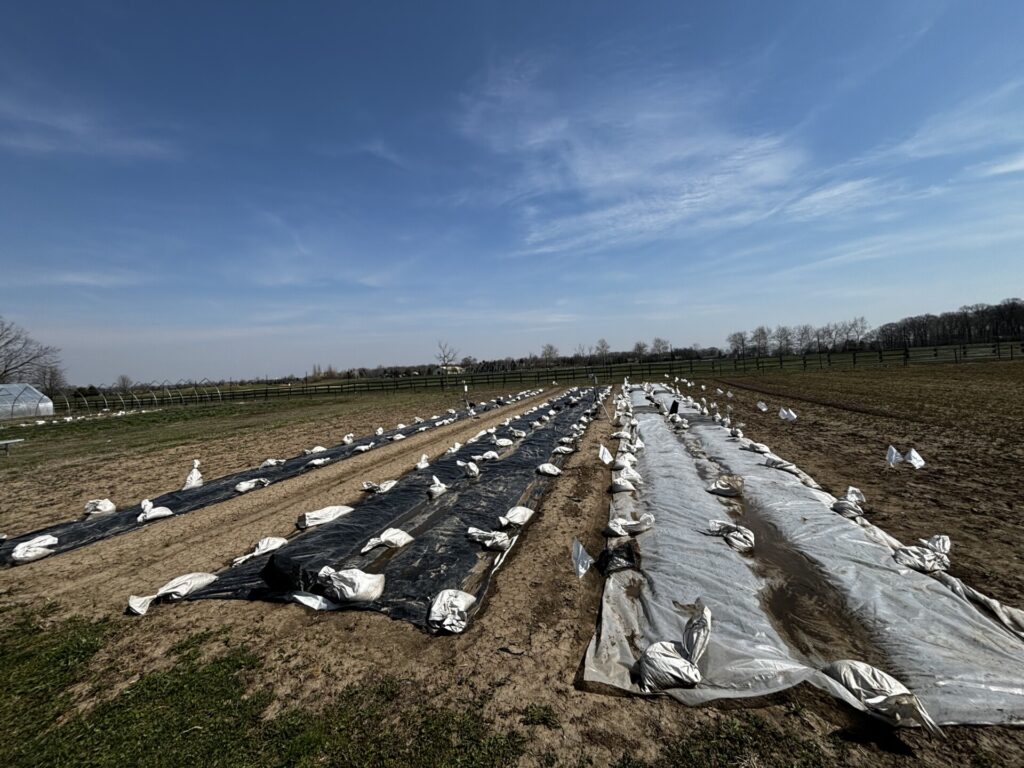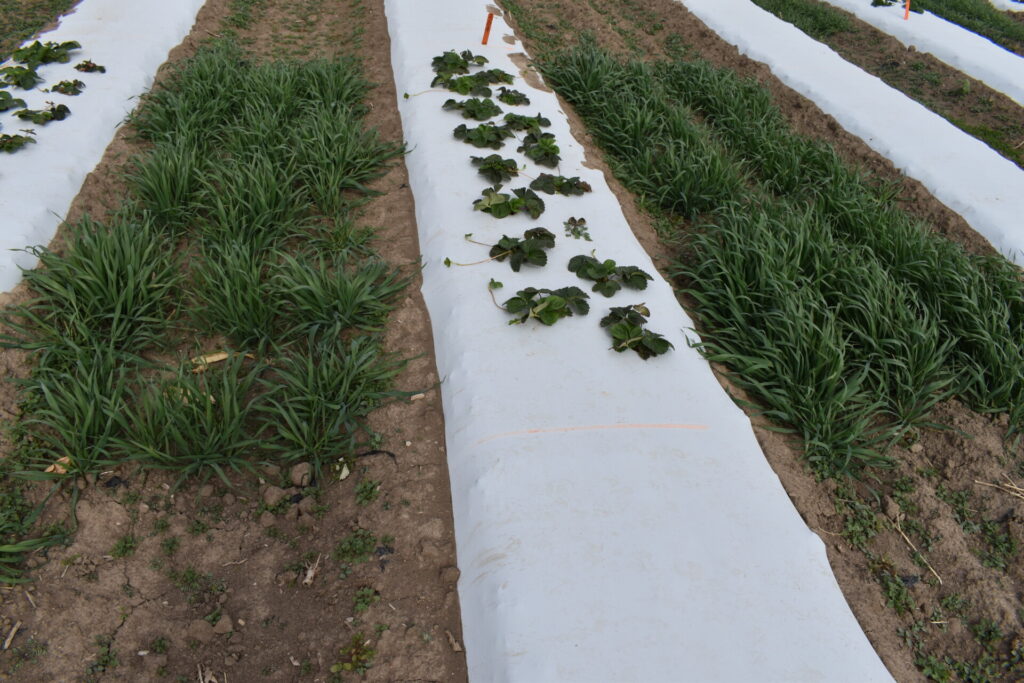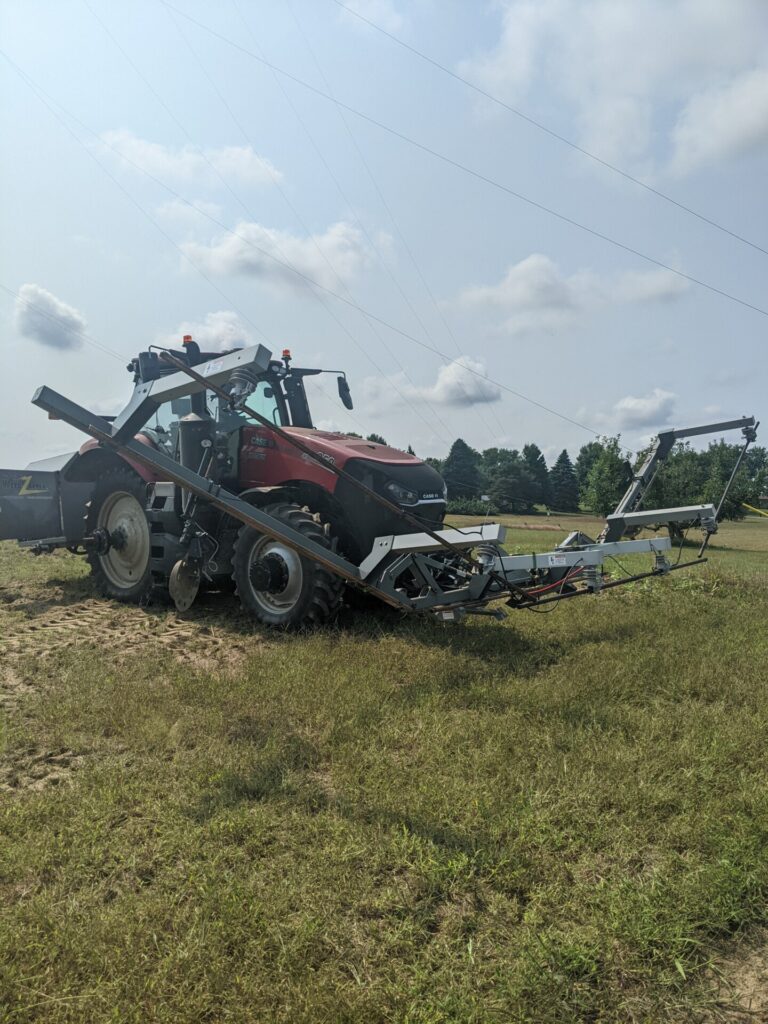Weeds can quickly take over vegetable farms, reducing yield and interfering with harvest. Effective weed management is vital for keeping farms efficient and productive. Because every farm is unique, there is no universal weed management solution. Prior to implementing a weed control strategy, you should properly identify the problematic weeds on your farm and establish your individual threshold, or level of tolerance, for weeds. While some farms practice a strict zero-tolerance policy for weeds, others embrace the presence of some weeds as a sign of biodiversity. In this guide, we compiled common weed management practices for vegetable production, organizing them into four categories: cultural, mechanical, biological, and chemical. Most farms will benefit from implementing combinations of these control measures into a broader Integrated Weed Management (IWM) program.
Cultural
Sanitation
Weeds can be transported in many different ways—for example, with water, wind, or attached to animal fur. Weeds can also be moved within and between fields on tools, equipment, machinery, and clothes. When moving from weed-infested fields to “clean” ones, remove soil and plant parts from boots, tools, tractor tires, and implements to avoid spreading problematic weeds.
Exclusion
Limit the risk of introducing weeds to your farm by using only inspected/tested seeds to ensure they lack noxious weeds and contain minimal other weed seeds. This is especially important for cover crop seeds (Figure 1). Weed seed can also be introduced onto a farm from contaminated straw or hay used as mulch and from field edges and fence rows.
Crop Rotation
Rotating crops can disrupt weed life cycles and reduce their population over time. The idea behind crop rotation for weed management is to alternate crops that are more vulnerable to weed infestations or have fewer weed management options with those that are more competitive or have more management options. For example, vegetables can be rotated with agronomic crops such as soybeans, corn, or winter wheat.
Cover Crops
Cover crops compete with weeds for light, water, and nutrients- much the same way weeds compete with crops (Figure 2). Some cover crops, like cereal rye, also release allelopathic compounds that can inhibit weed growth. Terminated cover crop residue provides a physical barrier to weed growth, which can prevent weed seed germination and/or emergence.

Figure 2. Marestail grows in a strip of land that was not planted with fall-seeded cover crops (center), while no marestail is present in the portion of the field planted with rapeseed (left) or cereal rye (right) (Photo by S.L. Meyers).
Plant Spacing
Planting crops at appropriate distances can reduce the time it takes to form a full crop canopy, thus shading out weeds more quickly (Figure 3).
Cultivar Selection
Choose varieties that grow well in your region or on your farm. Vigorous plants are more competitive with weeds (Figure 3). Crop canopies can vary among cultivars. Choosing cultivars that are quick to canopy or have dense shoot growth can shade weeds. Cultivars with vigorous root systems outcompete weeds by using soil nutrients and moisture more efficiently.

Figure 3. Weeds at the Purdue Student Farm were outcompeted more effectively by ‘Flamingo’ spinach (left), which had a higher rate of germination and more upright growth than ‘Woodpecker’ spinach (right) (Photo by S.L. Meyers).
Mechanical/Physical
Tillage
In soils with a heavy presence of seeds on the upper soil surface, inversion tillage with a traditional plow can be used to deeply bury these seeds and prevent them from germinating. Avoid routine plowing, which will bring the buried seeds right back to the soil surface.
Cultivation
Cultivation implements come in many shapes and sizes but serve a similar function—to uproot small weed seedlings (Figure 4). Regular cultivation may be necessary if this is your primary method of weed control. Unfortunately, cultivation can increase the spread of perennial weeds like yellow nutsedge and Canada thistle because they spread vegetatively. Cultivation should target small weeds. It will be less effective against larger weeds and in wet soil conditions.

Figure 4. A tractor-mounted S-tine cultivator removes small weeds from row middles of plasticulture watermelon (Photo by J. Arana).
Hand-weeding/hand-hoeing
These practices are labor-intensive but can be an effective way to remove weeds that escape other control tactics (Figure 5), for example, herbicide-resistant weeds.

Figure 5. Hoeing weeds that escaped a preemergence herbicide application in the row middles of plasticulture summer squash (Photo by J. Arana).
Flame Weeding
Burning weeds with propane torches or flame weeders (Figure 6) is particularly effective for young, annual, broadleaf weeds. However, it only provides temporary control of perennial weeds.

Figure 6. Flaming weeds emerged on the planting row before planting (left) and scorched weeds after one pass of the flame weeder (right) (Photo by J. Arana).
Mulches
Applying synthetic or organic mulches can smother weeds and prevent sunlight from reaching weed seeds. The lack of sunlight prevents some weed seeds from germinating and keeps others that do germinate from photosynthesizing. Synthetic mulches include plastic mulch (Figure 5) and woven landscape fabric. Organic mulches are derived from plant materials and include wheat straw (Figure 7) and tree bark.

Figure 7. On this small farm, wheat straw is used as an organic (plant-based) mulch to suppress weeds between rows of staked tomatoes (Photo by S.L. Meyers).
Tarps
Plastic tarps can be used to create a stale seedbed or provide early-season weed control in slow-to-emerge crops like potatoes. Although different types of tarps can be used, silage tarps are most commonly used for this purpose. Silage tarps are thicker than plastic mulch and opaque, meaning that weeds that germinate beneath them do not receive sunlight and die. During the growing season, tarps are placed on planting beds for approximately 3 weeks and then removed immediately prior to planting/transplanting the crop (Figure 8).

Figure 8. Silage tarps (left ) and clear tarps (right) are placed onto prepared planting beds to create a stale seedbed prior to transplanting onions (Photo by J. Cerritos).
Electrocution
Applying controlled electrical pulses directly to the weeds disrupts their cellular structure and kills them. Electrocution works best on upright, broadleaf weeds with a central leader and is less effective on grasses and perennial weeds. For example, tubers of electrocuted yellow nutsedge plants remained viable after electrocution treatments. Currently, most weed electrocution implements require larger tractors with greater horsepower to transfer enough electricity to the weeds (Figure 9).
Biological
Living Mulches
Living mulches are grown in tandem with a cash crop (Figure 10). These living mulches act as a natural barrier, reducing detrimental weed establishment and growth by competing for sunlight, water, and nutrients. This is most commonly used in row middles between plasticulture-grown vegetables. Other examples include clover planted between established corn. Another option is to allow neutral weed communities to establish alongside cash crops. Neutral weeds, by definition, do not compete with the cash crop for resources and do not have a negative impact on cash crop yield or quality.

Figure 10. Oats planted within the row middles (walkways) of plasticulture strawberry production act as a living mulch (Photo by J. Arana).
Seed predation
Seed predation involves the consumption of weed seeds by natural predators, such as insects, birds, or rodents. By eating or biting weed seeds before they germinate, seed predators help to reduce the weed seed bank and seed viability in agricultural fields, ultimately decreasing weed pressure and population densities.
Livestock
Livestock, such as cattle, goats, sheep, or geese, can selectively consume certain weed species while grazing, decreasing weed biomass and seed production. Integrating livestock into crop rotations or grazing them in fallow fields can help control weeds.
Bioherbicides
Bioherbicides are naturally occurring substances derived from plants, microbes, or other organisms that suppress weed growth. One notable example is vinegar, a common household item that can effectively suppress weeds when applied in higher concentrations than those used for human consumption.
Chemical (Herbicides)
Herbicides can be broadly categorized in many ways. Most function by disrupting the function of enzymes in susceptible plants. To learn more about what herbicides are registered for use in your crops, consult the Midwest Vegetable Production Guide (mwveguide.org).
Pre-emergence vs Post-emergence
Pre-emergence herbicides (also known as soil-applied or residual herbicides) are called “pre-emergence” herbicides because they are applied before weed seeds emerge. Most must be absorbed by weed seeds as they germinate. For this reason, pre-emergence herbicides must be “activated” by rainfall or overhead irrigation to move them into the top inch or so of soil where weed seeds actively germinate. Larger-seeded weeds can germinate from deeper in the soil profile and may not be controlled as effectively by pre-emergence herbicides (Figure 11). Post-emergence herbicides are applied to emerged weeds and can be either contact or system in their function.

Figure 11. Morningglory seedlings emerging in a field treated with pre-emergence herbicides. Note the white portion of the seedling stem (or hypocotyl) on the left morningglory indicating this plant emerged from several inches deep and below the treated portion of the soil profile (Photo by S.L. Meyers).
Contact vs. Systemic Herbicides
Contact herbicides act upon direct contact with plant tissue, causing rapid desiccation or destruction. Although they may be taken into the leaves of a sprayed plant, they are not moved far throughout the plant. They are effective for rapid weed control of small, emerged weeds but may not provide long-lasting results, especially for perennial weeds. Systemic herbicides are absorbed by plants and moved throughout the vascular system, reaching and affecting areas beyond the point of application. These are more effective against larger and perennial weeds and provide longer-lasting control.
Selective or Non-Selective
Selective herbicides control some weeds and not others. For example, grass-selective herbicides, like clethodim, do not provide control of broadleaf weeds. Similarly, broadleaf herbicides like 2,4-D will not control grassy weeds. Non-selective (also known as broad-spectrum) herbicides are less picky about the weeds they control. These herbicides are often applied as a pre-plant burndown or row middle application with caution to avoid contacting the crop and include herbicides such as paraquat, glyphosate, and glufosinate.

